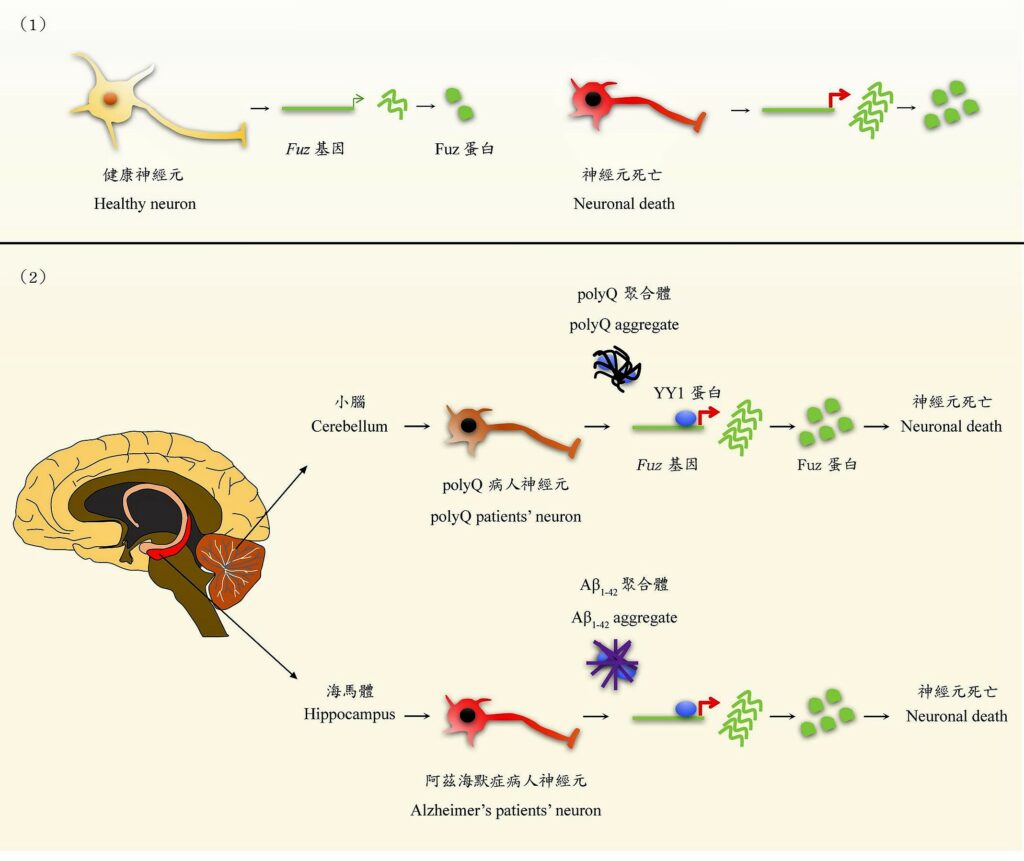New Treatment Paths for Neural Diseases
Spinocerebellar ataxia type 3 (SCA3) is the most common form of dominantly inherited ataxia. SCA3 patients often present problems with gait and balance, blurred vision, and speech difficulties. The symptoms are progressive, and to date SCA3 remains an incurable disease. Our research team has recently discovered a novel pathogenic mechanism of the new function of Fuz protein in inducing neuronal death for a group of rare genetic neuronal disorders, known as polyglutamine (polyQ) diseases, including spinocerebellar ataxias and Huntington’s disease.
Improper folding of a protein may result in cellular malfunctioning and lead to diseases. Misfolded disease proteins (polyQ protein aggregates) are detected in the deteriorating neurons of SCA3 and other polyQ disease patients. SCA3 polyQ protein aggregates perturb the function of Yin Yang 1 protein (YY1) as a repressor of Fuz protein (Fuz), and the expression level of Fuz will increase. Once it exceeds 2.5 times the normal level, it will trigger apoptosis and eventually lead to neural diseases.
- Our finding shows that the expression level of Fuz also increased in Alzheimer’s disease
- Fuz-mediated apoptosis pathway plays some common roles in neurological disorders
- We are now investigating the involvement of Fuz in other disease conditions, and finding compounds that can bring Fuz upregulation back down to a normal level
- This research will be a novel therapeutic direction toward polyQ and Alzheimer’s diseases and make contributions to the advancement of biomedical science research in neural disease biology


